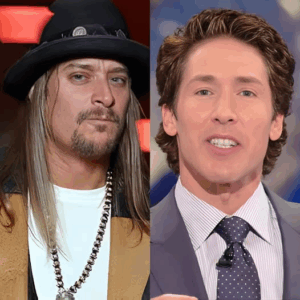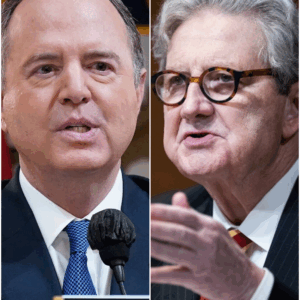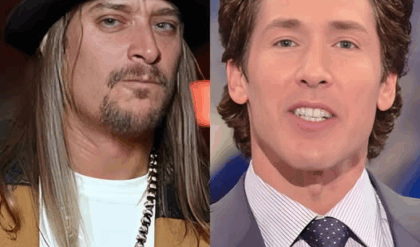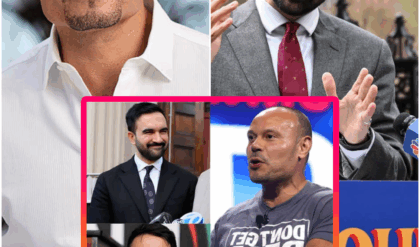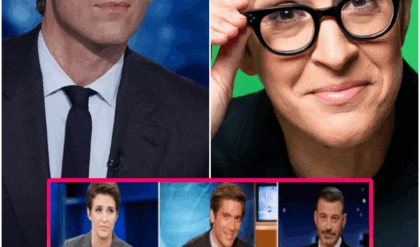“CUT IT NOW!” — Jon Stewart’s 2025 CBS Takedown That Left a Studio in Shock and America Talking
No one saw it coming. The night began like any other in live television—bright lights, polished scripts, and the quiet hum of a studio running on autopilot. But by the time the credits rolled, CBS was in chaos, social media was on fire, and Jon Stewart had just delivered one of the most shocking live moments in broadcast history.
The trigger? A single, defiant command—“Cut it now!”—spoken with a conviction that shattered the glossy illusion of control inside one of America’s most powerful television networks.
CBS, already reeling from the abrupt cancellation of The Late Show with Stephen Colbert, had hastily filled the empty slot with a “special live segment” meant to stabilize ratings and reassure advertisers. The night was supposed to be safe, structured, forgettable.
Instead, it became historic.

The Moment That Stopped Television Cold
Producers had billed the segment as a roundtable on “The Future of Late-Night.” Stewart was invited as a guest—a legacy voice to lend gravitas to a turbulent moment in network programming. Viewers expected sharp commentary, maybe a few jokes about Colbert’s departure, and then a pivot to lighter fare.
What they got was silence. Then fire.
As cameras rolled, Stewart leaned forward, adjusted his microphone, and, with deliberate calm, broke from the teleprompter. “You want to talk about the future of late-night?” he said. “Then tell the truth about what killed it.”
The control room froze. On-air talent exchanged nervous glances. A stage manager whispered, “Is he off-script?”
Stewart wasn’t off-script. He was dismantling the script.
What followed was not comedy, not commentary, but a live rebuke of corporate censorship and media complacency—broadcast unfiltered before a stunned audience of millions.
“Buy Me a Coffin if You Want Silence”
At first, the network tried to ride it out. But Stewart’s tone made that impossible. His voice dropped low, his expression steeled.
“Every network wants laughter,” he said, “but not honesty. You want the illusion of truth, not the cost of it. If you want silence, buy me a coffin.”
A collective gasp swept through the studio.
Producers in the control booth scrambled to mute his mic, but the feed stayed live. The director hesitated—cutting away would confirm guilt. The moment stretched, unbearable and electric, as Stewart stared straight into the camera, unblinking.
“Cut it now!” someone shouted off-stage.
It was too late. The clip was already destined for history.
A Studio in Shock
When the broadcast ended, the room fell into stunned quiet. Crew members stood motionless. Audience members sat wide-eyed, unsure whether to applaud or breathe. According to one staffer present that night, “You could feel something shifting—like a curtain being ripped open.”
Within minutes, the segment was trending worldwide. Hashtags like #JonStewartLive, #CutItNow, and #TruthOnAir dominated X (formerly Twitter). TikTok flooded with reaction clips. Reddit threads analyzed every frame, every pause, every flicker of expression.
“This wasn’t performance,” one viewer wrote. “It was a declaration.”
Inside CBS: Panic and Denial
By dawn, CBS executives were reportedly in emergency meetings, scrambling to contain the fallout. Internal memos described the outburst as a “major reputational incident.” One insider told Variety, “We didn’t just lose control of the narrative—we lost control of the broadcast.”
CBS declined to comment officially, issuing only a one-line statement: “We value all creative voices and are reviewing last night’s broadcast.” But privately, damage control was underway. Senior producers were questioned. Editors were told to scrub replay footage. Affiliate networks received quiet directives to delay rebroadcasts.
None of it worked. The internet had already preserved every second.
The Symbolism Behind the Outburst
Analysts quickly connected Stewart’s on-air rebellion to the larger industry upheaval surrounding Colbert’s exit. In recent months, CBS had faced mounting criticism for allegedly muzzling political commentary and sanitizing satire to appeal to corporate advertisers.
To many, Stewart’s defiance felt like the inevitable backlash—the moment someone finally said what others had whispered for years.
“Jon Stewart didn’t just go rogue,” media scholar Dr. Celeste Grant told The Guardian. “He reminded America that television can still be dangerous. That truth can’t always be managed.”
Stewart’s gesture—cutting through the scripted calm of network television—was seen as both a protest and a warning: the death of authentic media doesn’t happen with censorship; it happens with compliance.
Cultural Shockwave
By the next morning, the clip had racked up over 80 million views across social platforms. Fans hailed it as “the speech of the decade.” Others called it a meltdown. Regardless of interpretation, everyone was watching.
Talk shows dissected it. Podcasts replayed it. Politicians weighed in. Even rival networks—usually competitors—acknowledged the magnitude of the moment.
CNN host Van Jones described it as “a line in the sand for truth in media.” Meanwhile, Fox News commentator Tyrus tweeted, “Finally—someone said it live.”
In a rare moment of cross-partisan agreement, Stewart’s act united viewers across ideological divides. To some, he’d exposed hypocrisy. To others, he’d restored faith in courage.
The Jon Stewart Effect
This wasn’t the first time Stewart had turned a spotlight on the media’s own failings. From The Daily Show to his Apple TV+ venture The Problem with Jon Stewart (later canceled amid creative disputes), he had long warned that corporate gatekeeping was strangling public trust.
But this moment was different. It was raw, unscripted, and irreversible—a direct confrontation with the very system that built his career.
Industry analysts noted the uncanny timing: Colbert’s cancellation, reports of network interference, and Apple’s own quiet fallout with Stewart months earlier all formed a perfect storm. As one executive admitted anonymously, “He didn’t explode—he detonated what was already cracked.”
The Meaning Behind the Silence
Perhaps the most haunting part of the segment wasn’t what Stewart said, but what followed. After his final line, he fell silent. For twelve seconds—an eternity in live television—he just stared into the camera.
That silence became the story.
Clips of that moment flooded feeds, stripped of context, overlaid with the words “This is what truth sounds like.” It was replayed in classrooms, newsrooms, and even political briefings. The message was clear: Stewart had turned silence itself into a weapon.
Legacy in Motion
CBS has yet to address whether Stewart will face repercussions or whether the segment will be removed from archives. Sources close to the network suggest “contractual reviews are underway,” but others speculate the damage—and the legend—are already beyond containment.
What happens next could redefine the relationship between talent and television. Rumors have already surfaced that Stewart and Stephen Colbert are planning an independent platform—a “truth-first” network that operates free from advertiser interference. Whether real or rumor, the idea has electrified audiences hungry for authenticity.
The Final Frame
In the aftermath, Stewart offered no apologies. Speaking briefly to reporters outside his Manhattan office, he said only, “Sometimes you stop talking because you’ve said enough.”
That line now headlines think pieces and op-eds across the nation.
In an era when every broadcast feels scripted and every truth filtered through a corporate lens, Jon Stewart’s on-air defiance stands as something rare—unsanctioned, unedited, unforgettable.
It wasn’t rebellion for spectacle. It was conviction on live television.
And for millions watching that night, it was the sound of something breaking—finally.
News
The auditorium glitched into silence the moment Joel Osteen leaned toward the mic and delivered a line no pastor is supposed to say in public. Even the stage lights seemed to hesitate as his voice echoed out: “God will NEVER forgive you.” People froze mid-applause. Kid Rock’s head snapped up. And in that weird, suspended moment, the crowd realized something had just detonated off-script.
The crowd expected an inspiring evening of testimony, music, and conversation. What they got instead was one of the most explosive on-stage confrontations ever witnessed inside a church auditorium. It happened fast—36 seconds, to be exact.But those 36 seconds would…
The room stalled mid-breath the moment Mike Johnson snapped open a black folder that wasn’t on any official docket. Cameras zoomed. Staffers froze. The label on the cover — CLINTON: THE SERVER SAGA — hit like a siren. Johnson leaned toward the mic, voice sharpened enough to scratch glass, and read a line that made every timeline jolt: “Her email is criminal.”
Here’s the thing about made-for-TV government: it knows exactly when to hold a beat. Tuesday’s oversight hearing had the rhythm down cold—routine questioning, polite skirmishes, staffers passing notes like we’re all pretending this is not a stage. And then Mike…
🔥 “THE FLOOR SHOOK BEFORE ANYONE COULD SPEAK.” — Investigator Dane Bonaro didn’t walk into the chamber — he tore through it, slamming a blood-red binder onto the desk with a force that made the microphones hiss. The label on the cover froze the room mid-breath: “1.4 MILLION SHADOW BALLOTS.” He locked eyes with the council and snarled, “You want the truth? Start with this.” For one suspended second, every camera operator lifted their lens like they’d just smelled a political explosion.
Here’s a scene you’ve watched a hundred times if you’ve spent enough hours in hearing rooms and greenrooms: a witness with a flair for performance, a committee hungry for a moment, and a gallery of reporters quietly betting which line…
🔥 “THE SMILE FLICKERED—AND THE ENTIRE STUDIO FELT IT.” — Laura Jarrett walked onto the Saturday TODAY set with the kind of calm, polished glow producers dream of. Cameras glided, lights warmed, and the energy felt like a coronation. But right as she settled between Peter Alexander and Joe Fryer, something shifted — a tiny hesitation in her smile, the kind that makes everyone watching sit up a little straighter. And then it came: a voice from outside the studio, sharp enough to snap the broadcast in half. For a full second, no one moved.
Here’s the thing about TV milestones: they’re designed for easy applause. A new co-anchor takes the desk, the chyron beams, the studio lights do their soft-shoe, and everyone is on their best behavior. It’s a ritual as old as morning-show…
🔥 “THE ROOM STOPPED LIKE SOMEONE CUT THE OXYGEN.” — What’s racing across timelines right now isn’t framed as a speech, or an interview, or even a moment. It’s being told like a rupture — the instant Erika Kirk, normally armored in composure, let a single tear fall while standing beside Elon Musk. Witnesses in these viral retellings swear the tear didn’t look emotional… it looked inevitable, like something finally broke through her defenses. And when Musk turned toward her, the entire audience leaned in as if they already knew the world was about to shift.
It was billed as a calm forum on human rights—an hour for big ideas like freedom, transparency, and the obligations that come with having a public voice. The stage was washed in soft gold, the kind of lighting that flatters…
🔥 “THE ROOM WENT DEAD IN UNDER A SECOND.” — What unfolded inside the Senate chamber didn’t look like a hearing anymore — it looked like a trap snapping shut. Adam Schiff sat back with that confident half-smile, clutching a 2021 DOJ memo like it was the final move in a game he thought he’d already won. Staffers say he timed his line perfectly — “Your rhetoric ignores the facts, Senator. Time to face reality.” But instead of rattling Kennedy, something in the senator’s expression made even reporters lean forward, sensing the shift before anyone spoke again.
It didn’t look like much at first—another oversight hearing, another afternoon in a Senate chamber where the oxygen gets thinned out by procedure. Then Adam Schiff leaned into a microphone with a lawyer’s confidence, and John Neely Kennedy pulled out…
End of content
No more pages to load
